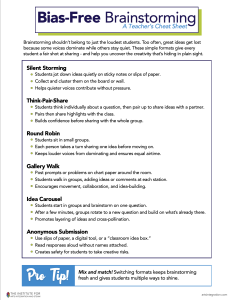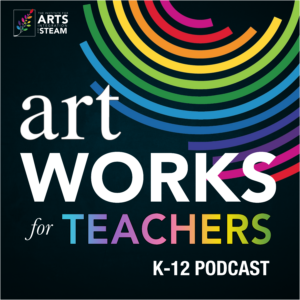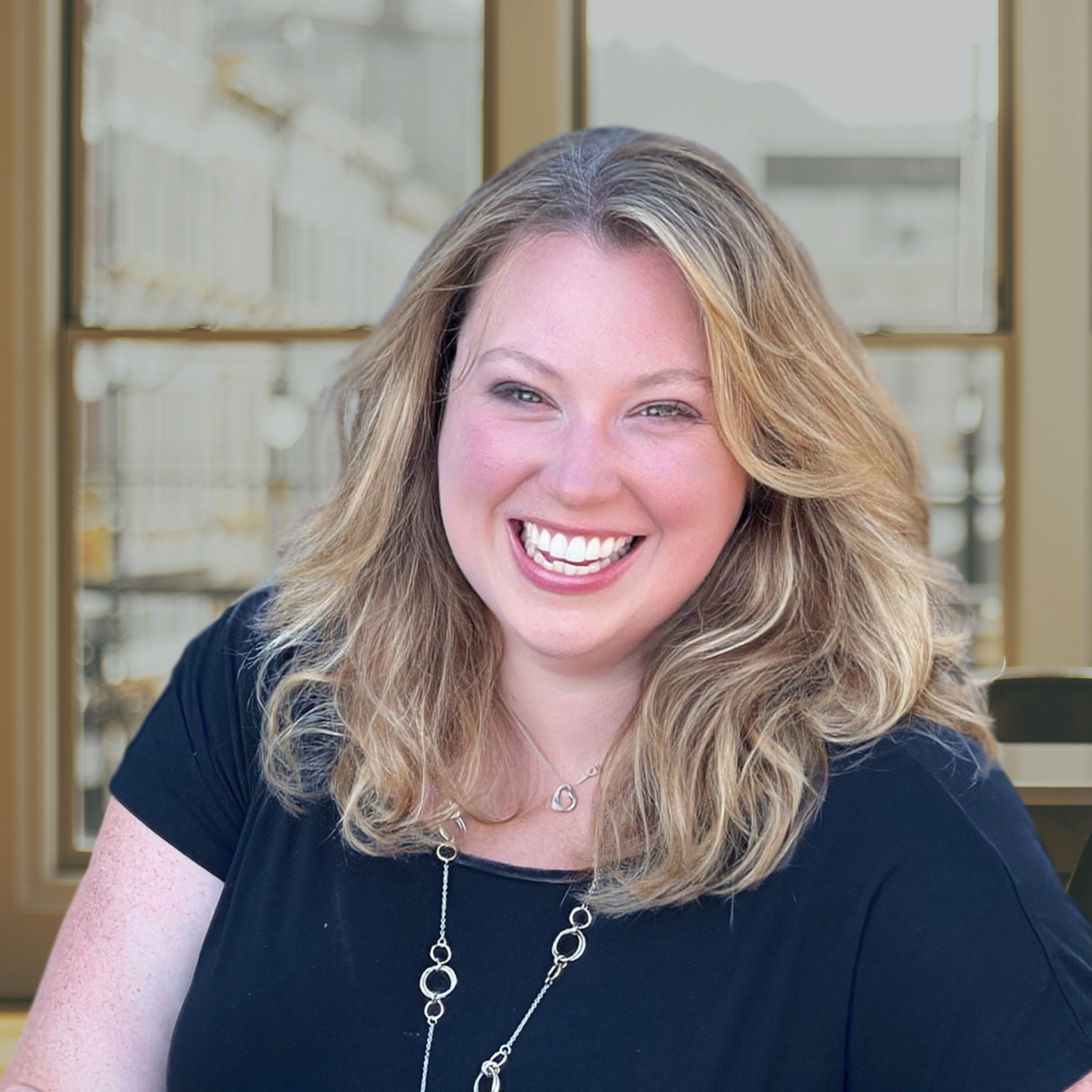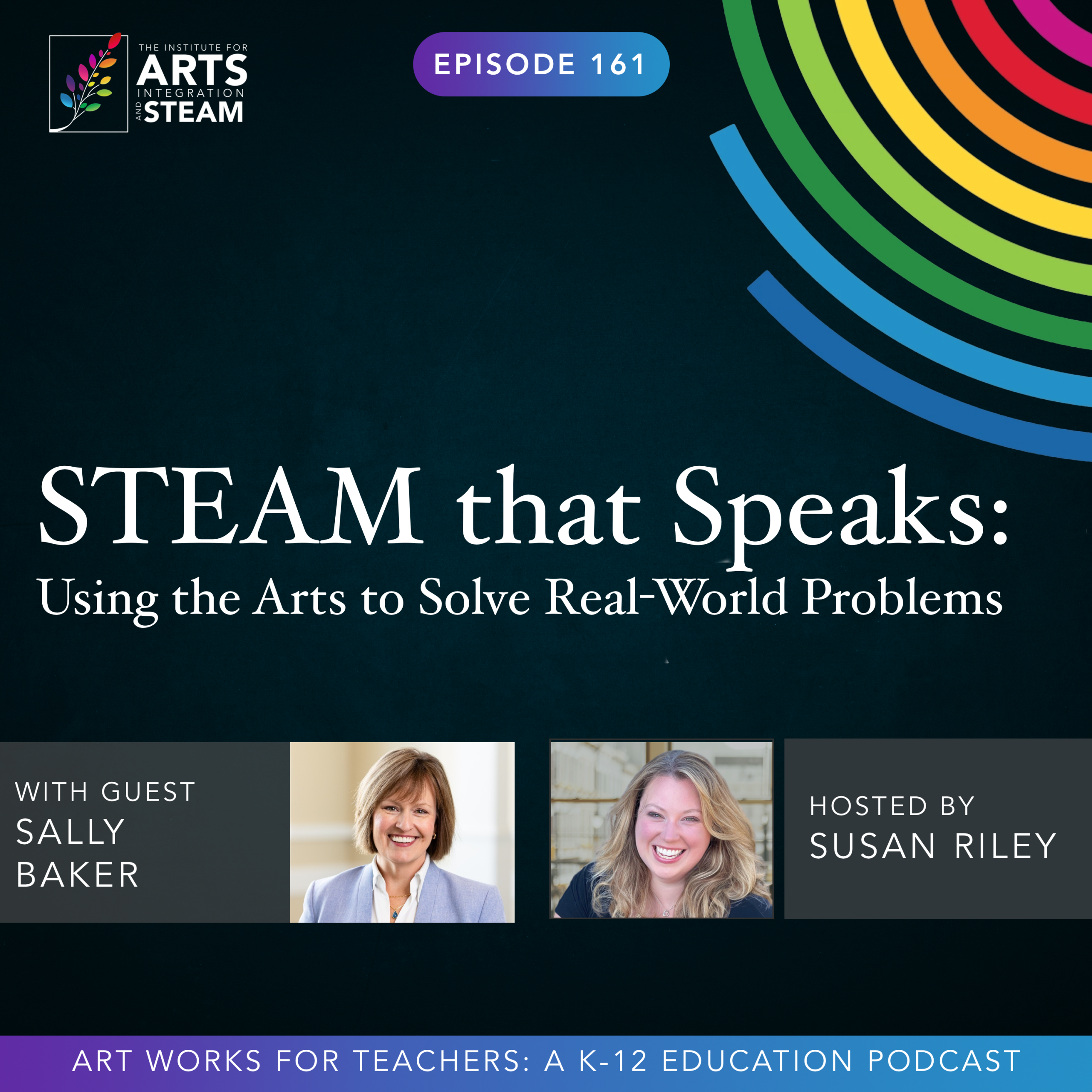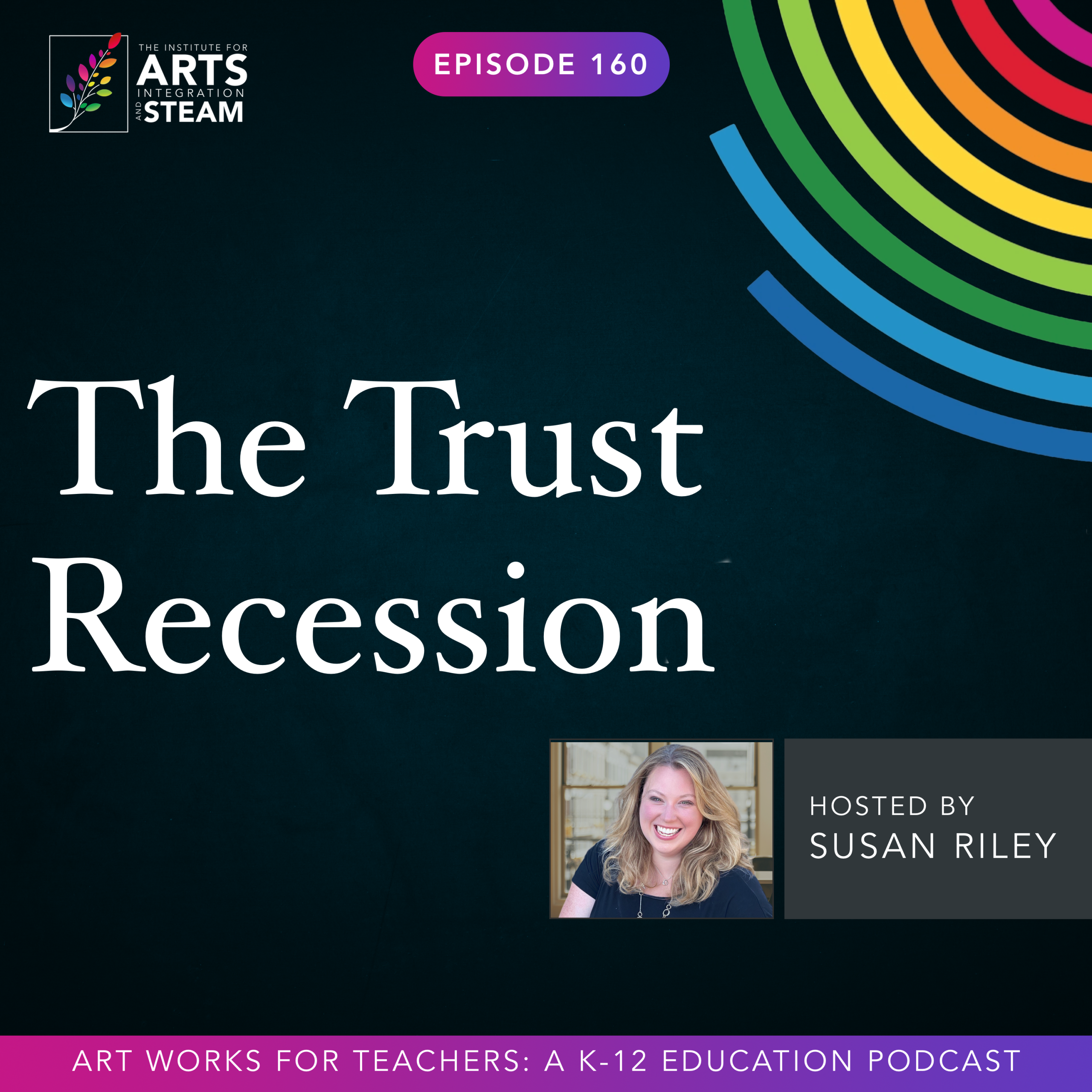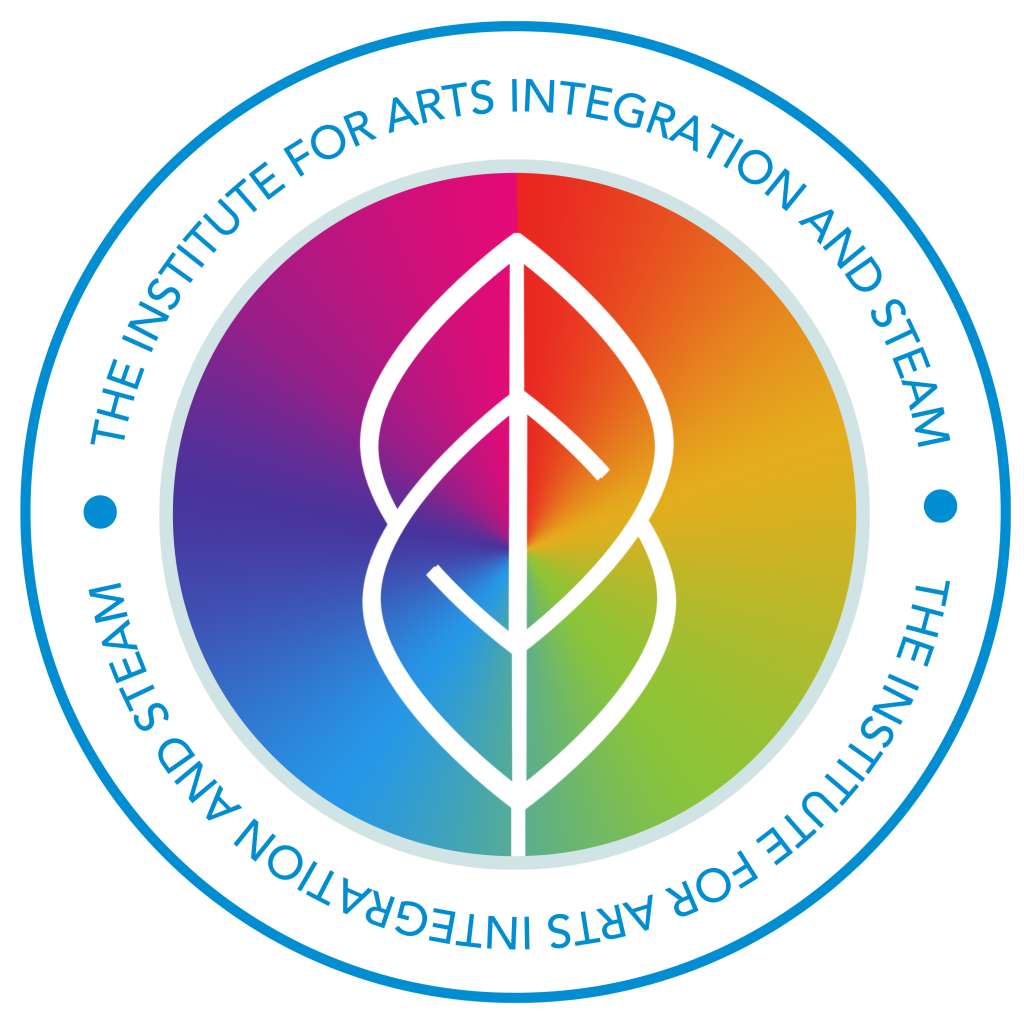ART WORKS FOR TEACHERS PODCAST | EPISODE 156 | 32:00 MIN
Brainstorming without Bias: Tools for the Next Generation of Creators
Enjoy this free download of the Bias-Free Brainstorming resource.
Susan
Well, welcome, Birna I'm so glad you're joining us today.
Birna
Thank you so much for inviting me. I'm really excited to be here.
Susan
Of course. So can you share a little bit about your personal journey and what led you to focus on creativity, education, and AI?
Birna
Yes, I sometimes describe myself as Iceland's biggest nerd when it comes to creativity and innovation, because I've been deep into those subjects for over a decade now. And like, I'm just super passionate about it. I've been researching it for my PhD thesis and I've been teaching about it in universities and doing TEDx talk here. And like, I'm just super passionate about it because it's such a powerful thing to have.
Like, we are all creative and we can all become more creative and it's just with AI and all those fast changes, creativity really changes the game. So I'm just really passionate about this subject.
Susan
Amazing. So was there a spark? was there a beginning? Were you always creative? Like, were you creative as a young child or did you just kind of stumble into that?
Birna
Yeah, I kind of stumble into it. So I'm super curious. That's my kind of like a superpower when I know how valuable it is when it comes to creativity. when I was doing, my background is in business. So I've studied business education in Australia, Mexico and Iceland. And when I was doing an HR course, my teacher was a PhD student. And the students in the class were like, oh, Birna, you should do a PhD.
And people around me were talking about doing a PhD. So I was just curious and I wrote to my university here in Iceland, like, can I know more about your PhD program? And then I got a reply from a professor and she was in the innovation and entrepreneurship department. And that's how I started focusing on creativity because that's what you need for innovation.
Susan
Absolutely. Well, you've woven creativity into your AI platform, Bulby, which I think is phenomenal. I've been looking for a tool like this. And so when we stumbled on Bulby, I was like, I was a little skeptical at first, especially because there's so many questions around AI creativity. Does AI eliminate creativity or does it somehow manipulate creativity? But I love your platform and that it's designed to
support human creativity through brainstorming. can you walk us a little bit through, like share a little bit what inspired you to create that and how it might be different from other AI tools that's out there?
Birna
Yeah, I'm happy to hear that you like it. Thank you. So creativity is a thought process. Like the definition I work with is a thought process that leads to something new and useful. And when I was learning about it, I realized humans, have so much bias that can reduce our creativity and the brain, like the purpose of the brain is to survive. And so we really have to help our brain be creative.
So I wanted to teach people how to become more creative and that you can train it. And so I was teaching people about different exercises that have been used in research to enhance our creativity. And I was teaching them about those research exercises. And when I had been teaching that for a while, I realized, okay, let's just do a soft term around it to make it easier for people to use those exercises, to lead their brain to overcome those biases that we have.
And for example, one bias that we really need to be aware of is that our brain loves something that is familiar. And the brain loves to reserve its energy and it takes more energy to think of something that is more different than what you're used to, so more creative. yeah, so for example, when I'm teaching people those exercises, I often invite them to draw a picture of a house.
And sometimes I just invite them to imagine it. So if you're listening, I want to ask you to imagine that you have a blank piece of paper in front of you. then the task is to draw a house. And I've done this with like probably thousands of people now. majority of people draw the same type of house. It's a square with a triangle roof. And this is the bias that the brain has. We go to familiar solutions.
But research has shown that we need many ideas. And when I ask people, please draw a house, five different houses, none of them can be the same. Then I suddenly see like a boat house or a fairy tale house of a mushroom or something like totally different. And the purpose of the software is to lead our brain into different directions to overcome those biases.
And also the purpose of it is to help groups brainstorm better. so research has been looking into brainstorming for many years now. And people are better at being creative on their own rather in a group because the group dynamic can reduce our creativity. There are so many biases in that as well because our brain… is always trying to keep us safe. And if we come up with an idea that the person with the most power likes, it feels more safe. So we tend to come up with ideas that we believe the leader likes or the teacher likes. And also when we are in a group, people that are really creative, they tend to reduce their creativity and be more average because they want to belong in the group. And this is like, we are not aware of it, but we do it. And then the group thinking, like one person comes up with an idea in the beginning and the whole class goes in the same direction because we have directed our thought process. So the purpose of the software is to overcome all those biases in a simple way and you put it in the challenge and then you are led through those different creativity exercises.
And what I love the most is that all ideas are submitted anonymously. And that gives you more freedom to be brave enough to send out those crazy ideas that are needed for creativity. And then also we have another bias when we're choosing ideas. We tend to choose ideas from men, are often thought to be more creative than from women based on research.
And ideas from women, they're often like in the entrepreneurial world, ideas from women, the conversation usually goes into what could go wrong, but with man it's like what could go right. And so we have so much bias when it comes to ideas. That's why it's anonymous and gives every idea the same chance. And yeah, that's what I'm really passionate about because creativity is such a valuable thing in our world today.
Susan
Yes, well, and there's so many things that I kind of want to touch on here because the research that you're sharing is fascinating. We've actually been going on a deep dive in this series into creativity and we've spoken with people from all over the world, Stanford, Harvard, Yale, of folks from everywhere. And one of the things that has been really surprising to me is there's been a rise in the amount of folks who are claiming that creativity is not an isolated event, it is something that is collaborative and that it actually thrives in a group setting. And I think it's really fascinating what you're sharing that. I don't know that you're disagreeing with that. If I'm wrong, please let me know. But it does sound like there's qualifiers that if we're going to be creative in a group, there are pitfalls that we need to know about like these biases. Is that right?
Birna
That's right, exactly. So the thing is that groups, they tend to be better at choosing ideas together. And also like the first ideas, you would like to build on them. But when you use method like the bulby inside that, the purpose is that you first start alone and then you bring it to the group. So it's not that you should never be in a group. It's just you first start alone. Then you get the most out of it. Yeah.
Susan
Gotcha. And so this AI tool, Bulby, that you've created that allows you to work through some brainstorming processes, which I'm assuming are the brainstorming processes that you've been teaching to people, right? You've put them into this platform. So I love that it gives everybody an equal chance. I really enjoy that that's like, so that we're trying to eliminate those biases as best we can rather than letting the loudest voices take over. How can teachers bring that kind of an approach into their classroom so that all students can feel heard?
Birna
Yeah, so creativity brings on lot of uncertainty and like how are people going to react to my idea? How are people going to view me when I share this idea? And like it's so much uncertainty that creativity brings. And that's why psychological safety is super important. And when teachers focus on that to like enhance psychological safety to allow children to feel safe and to reduce uncertainty. And because I created a model that the purpose is just to reduce uncertainty. it's a model that has a metaphor with a train. And because with train, just, know where it's going and you know it has tracks and it's just going to go there. So it is not that much uncertainty.
And I wanted to create an environment or a model that helps people reduce uncertainty. And the model has four parts, just like a train has four parts that it needs to run. It needs to know where it's going, the destination. It needs train tracks to be able to go there. It needs a train and fuel and innovation and creativity need the same, like four things. You need to know where you're going. So what is the purpose with the, I don't know, maybe you're teaching about dinosaurs. Like, where are you going? What do want the children to know afterwards? Like, what is the destination? And then you train tracks. And those are like, how are you gonna gather ideas? How are you gonna evaluate them? How are you gonna test them? That's the processes you need. And then you need the train itself. And that's the environment. And that's like, how are you gonna create the psychological safety for those crazy ideas?
And how are you going to create the environment that people feel, students feel relaxed enough to be able to think. And some are more creative in the morning, more in the after, others in the afternoon. Like how are you going to create the environment for the whole group of students? And then finally the fuel and that's the exercises and things like that. You can enhance the fuel with different exercises and different methods. And when you have those four things working together, the train can go to the destination. For example, if you're missing the processes the train tracks, it's really hard to know what kind of ideas should I bring forward. I don't know how they're going to choose the ideas. But when we have it clear, it reduces uncertainty. And same with the destination. We know what we're looking for. And our brain has this reticular activating system that helps us notice things around us that the brain believes is important. And when we know we're going, we're more likely to come up with an idea that is related to that destination. So all four things need to work together and by reducing uncertainty and creating more safety in the classroom, teachers can enhance innovation. But what I recommend the most is not sharing the names like that is like yeah secret who brought in the idea in the beginning yeah so so that people feel yeah
Susan
Yes. Yes, and that's where Balbi comes in, right? Because everybody have their ideas in there and their names aren't shared. It is anonymous. And so you can really focus on the best idea in order to move forward. Yeah, absolutely. what do you, there's a lot of conversation right now swirling around AI, in particular around for in the artists community and arts educators, artists themselves on the merits or the dangers of using AI in terms of, for creative pursuits, including brainstorming, things like that, who owns it, what are the ethical components around it. If we lean into the AI that currently exists, there's a fear that it will take over our creativity and then we'll have no need for that and that human component will be lost.
What are your thoughts around that in terms of AI and creativity, where it's going, and maybe if there are any boundaries that we need to be aware of?
Birna
So I believe creativity and AI, they work so amazingly well together. And for example, like one story I like to share with you, it's a riddle and it's about a woman. She just bought a new black sports car and she's driving in the countryside and there's no light bulbs and you cannot see the moon.
And she's driving really fast and suddenly a man wearing all black crosses the street and she's able to see him. And the question is, how was he able to see him? And for most people, when I tell them this story, the environment is that it's an evening or night. But in this story, it was just a bright and sunny day and it was easy for her to see the man passing the street or crossing the street. But with AI, we can we can be more sure that we're talking about the same thing because we can use AI to, for example, create pictures of what we're talking about. We can create websites and we can… Like I was able to create a computer game and I am just so fascinated about it. But what I needed to be able to create those things was my creativity. And with my creativity, I was able to create a game.
And with my creativity, I'm able to pictures and things like that. Like I am creating it first, but AI is helping me share it and help me bring it to the group. And then we can take it forward faster. And like there's so many opportunities. also AI can help me become more creative with exercises and I can learn about creativity. And for example, how valuable restrictions are for creativity. And I can create a custom GPT that puts restrictions on everything I do to enhance my creativity. But I have to think about it first. So it's such a valuable relationship that we need both. I am the one creating it and AI is helping me show my ideas. In my view, it's just an amazing tool. of course, with everything, you can use AI and creativity and whatever in the world to do something bad.
Like everything can be good or bad. and, but yeah, I believe the opportunities for good people to do good things are amazing with AI.
Susan
Yeah, I would agree. we're, I'll give everybody another example. We're in the middle of adjusting some of our programming online to include AI. And one of the things that I'd like to do, I'm struggling with, there's way to look at our analytics to understand how people are using things. And there are programs out there that we can buy. And we've certainly done that to help us with that. But there's not a direct connection that has to use two jumps, right? So the data's not as great as, refined as it could be. And so we've actually been playing with AI to build a programming tool that actually sits within our site to do that. And now, just last year, maybe, I would have had to hire a developer to do that work for me, but now I can program that myself. The idea comes from my brain. I want this, I want this, I want this. And it's not happening all at once, right? It's taking many, many iterations. still, if AI is left to its own devices, it's going to take the fastest, easiest route, right? And I want it to maybe work a little harder. And so I have to provide some of that. The, the twist to that is somebody will say, yes, but now that developer is out of a job. But I would say no, because the developer still has to test it. The developer can work with AI to create even better, faster tools that we can create together that I can't even imagine because they have that skill set. Right. So I think. I think your point about working together with AI is so valuable. One of the things that you shared there though, what I found really interesting was that we have a tendency to go so fast and that AI is going so fast, right? But you've really talked about the importance of going slow in a fast world. So what do you mean by that?
Birna
Exactly. So the brain is most creative when it feels safe. And when we are always rushing and like we feel this lack of time, lack of everything, like the brain believes I'm not safe. And when I'm not safe, I don't tend to be as creative. so when we use AI, like now I can move super fast with all my projects. And so my goal is to take that time back and focus on me to do yoga, nidra to take a warm bath and relax. like I created extra time. I'm not going to run faster because I know that's not going to be good for my creativity. And, but what is good for my creativity is relaxing more often to go on a solo walk and have no input puts in like, not going to listen to a podcast, not going to listen to music, but just to calm the brain and
When the brain is in that environment, for example, when we take a shower and there's no input, we tend to come up with those ideas because the brain is in the background, like connecting things in a new way and like, yeah, here's this new idea. When I'm taking a shower, I finally can hear it. yeah, just feel like creativity is like some people describe it as the currency of the 21st century. Like when you have creativity and combine it with AI,
Like you can do magical things. so, yeah, so that's the part. Going slow is so important for our creativity and creativity is so important for our success. so going slow is actually faster because we tend to see more opportunities and better solutions with our creativity.
Susan
Yeah, it's such a juxtaposition and it feels quite honestly that feels very difficult for those of us who run at a fast pace all the time. It's almost addicting to be that busy, right? The busyness almost feels like a badge. Like if I'm not busy, then I'm not working or I'm not valuable in some way. slowing down feels like we're being lazy when really that's what your brain truly needs in order, it's like sleep, right? You can't function well on four hours of sleep and that's not a badge we should all be wearing. We need those things that help us to slow down. So how can teachers use AI as a way to encourage deeper thinking and reflection and ways for us to slow down with students?
Birna
So I use AI in many different ways and I believe like, because I know the importance of slowing down, like it's a challenge for me as well. And the joke that being an adult means that you believe things will be slower in a week or two until you die. And I relate with that. But yeah, we really, I believe like the…
Our goal is to use our creativity to create a different pace, to create something different. we can, like for example, I use AI to help me come up with ideas how I can fit in more calmness into my day. like, this is my schedule for the day, how can I… add more calmness and like maybe just a breath or two in between tasks or like it doesn't have to be a full yoga nidra or a warm bath or something like that. It can be like just instead of taking the elevator, just take the stairs and breathe slowly while you walk upstairs or like those tiny things when we use our creativity to introduce those tiny things, it can really help our body feel more safe and AI can help us in many ways like to help us come up with those ideas.
And also AI can help us with making things that we do on a regular basis faster, maybe creating games around what we're going to do in classrooms. Like I have a custom DTP that I put in my daily plan, like what's my schedule for today, and then AI gamifies it.
And yeah, so we can use it. Yeah, we can use AI in so many different ways to help us calm down. But we really need to know, like with the train metaphor, like where are we going? How are we going to choose and test ideas? What environment do I need to create for myself? And then how am going to enhance my creativity?
Susan
Yeah, absolutely. So I love the playfulness that you bring to that. And I think that's a great reminder for all of us is that this doesn't have to be so serious. We can bring play in and that's also a way to feed creativity. I'm curious that even with all of the experience that you have and all of the work that you've done in creativity and AI, do you ever find yourself surprised or maybe even worried about where AI is going and evolving?
Birna
Yeah, so I regularly have those conversations with people around me and people are like, AI is so scary. and, and, but I'm super optimistic and I believe the AI can help us with solving those problems that we see. And, and like AI does not have the old brain like people do. So AI, like at this moment, like what it's like today, does not want to do bad. It does not need to feel greater than other people and like it doesn't have the old brain that we do. But it's about what people do with AI. And yeah, I believe there's just so much great opportunities with AI and this fast pace. Like I'm super excited about being old, like 100 years old and being in my house surrounded by… robots and like I'm super excited because the like the brain is so hard to comprehend how fast things are changing but I believe like there's so many great opportunities and if we are looking for how can we use it for good we're more likely to find ways to use it for good to use our creativity to use it for good
Susan
Absolutely, back to that reticular activating system. What you seek is what you will find. So I love that and making sure that that's where, yeah, that's where our focus is. So I have loved learning from you in this episode for teachers and students who are looking to explore more, where's the best way that they can either find your work or stay in touch with you?
Birna
Yeah, my email is birna at b-u-l-b-y.com. And I love talking about those topics. So if people want to email me, I would love to hear from them. And then also I read quite regularly on LinkedIn. My name is Birna Bryggisdottir. So my link is birna.db. And yeah, I would love to connect with people there.
And yeah, so and actually I just love talking about creativity and innovation. So please don't hesitate to reach out.
Susan
Fantastic, we will put all of those in the show notes as well so people can easily get in touch with you. Thank you so much for your time today, for your expertise, and for sharing with us how the emerging 21st century is a positive way that we can infuse creativity moving forward. I really appreciate it.
Birna
Perfect. Yeah, thank you for inviting me.
Susan
Of course.

